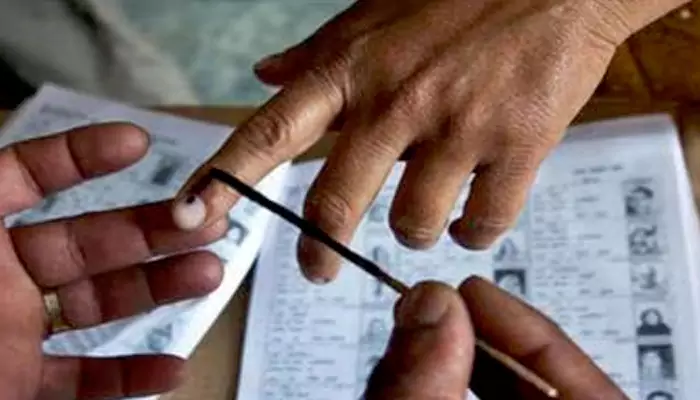
We must understand the trend of voting percentage in India to understand the power of democracy.
In the world's largest democracy- India- the voting percentage trend is crucial, mirroring the ever-changing political dynamics and the shifting preferences of its vast populace within the powerful democratic setup globally. It's imperative to explore and understand the pivotal trends influencing India's electoral terrain as millions gear up for the imminent Lok Sabha elections.
These trends encapsulate various factors, including demographic shifts, regional sentiments, socio-economic influences, technological advancements impacting voter outreach, and the rising issue-based politics. Each trend offers a subtle perspective, illustrating how Indian democracy continually adapts and responds to the multifaceted aspirations and concerns of the diverse population. As citizens actively engage in the electoral process, these trends shape political narratives and reflect the evolving ethos and aspirations of the upcoming India- marking a pivotal moment in the nation's democratic journey.

Surging Political Competition: The Battles for Votes. One of the most striking trends in Indian electoral politics is the explosion in political competition. From 55 parties in 1952 to a staggering 370 parties in 2009, the growth reflects a diverse and vibrant democratic process. Since the 1980s, the surge has been driven by regional parties addressing local concerns, leading to a more fragmented party system.
Declining Margin of Victory: The Changing Landscape of Electoral Margins. As political competition intensifies, the margin of victory in constituencies has decreased lately. Elections have become more closely contested, with candidates winning with smaller margins. This trend underscores the need for parties to engage with a range of voters and address diverse issues to secure electoral success.
From Votes to Seats: Decoding the Electoral Puzzle. While vote shares may remain relatively stable for major parties like Congress and BJP, the translation of votes into seats is often unpredictable. India's electoral rules can create biases, resulting in discrepancies between vote shares and seat distribution. Small changes in vote percentages can lead to significant shifts in the number of seats won, highlighting the complexity of India's electoral dynamics.

Understanding the Decline in Voter Turnout: The Stagnating Voter Participation. Despite the growing awareness of civic duties, voter turnout has seen modest growth over the years. Regional variations in turnout rates emphasize the diverse socio-political landscapes within India. Understanding the factors influencing turnout is crucial for analyzing electoral patterns and voter behaviour.
Federalizing Democracy: The Evolution of Electoral Politics. India's federal structure has elevated the role of states in shaping electoral outcomes. State-level dynamics, including governance performance and local issues, increasingly influence national elections. The interplay between state and national politics adds layers of complexity to electoral strategies and alliances.
These trends collectively reflect the vibrancy and complexity of India's democracy. The evolving nature of political competition underscores the need for nuanced analysis in understanding electoral outcomes with regional dynamics and voter behaviour. As India gears up for another landmark election, navigating these trends will be crucial for political parties and analysts.

The trend of voting percentage in India is not just a statistical metric but a reflection of the ever-changing dynamics of democracy. It highlights the diverse voices and aspirations of Indian voters and underscores the importance of inclusive political engagement. As we witness the democratic spectacle unfold, analyzing these trends offers valuable insights into the evolving fabric of Indian politics.